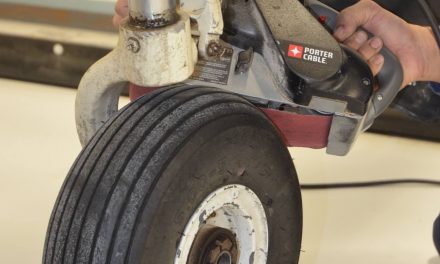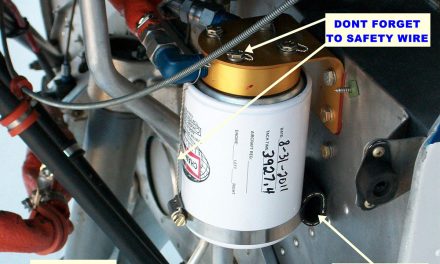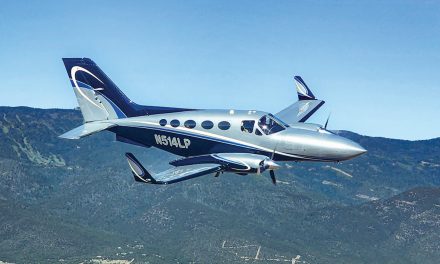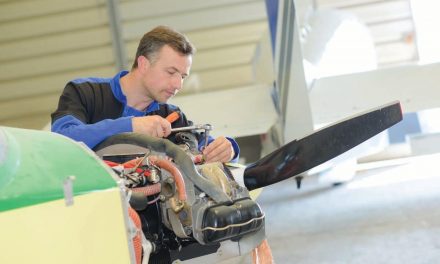Under the Cowling
5 Key Component Checks & Pre-flight Provisions to get a Long-Idle Airplane Back in the Air
Everyone is busy these days and almost all of us are guilty of neglecting our airplanes from time to time. However, when the opportunity to get “back in the saddle” after a few months of inactivity eventually arrives that first flight can sometimes be a challenge. Everything from bird’s nests to dead batteries to flat tires awaits the pilot of a plane that hasn’t been flown in a long time.
If you’re looking to get your grounded bird back in circulation, it’s important to know the typical problems associated with an aircraft that has been left unused. Whether the result of time or a byproduct of the environment in which they are kept, here are some key airplane components that are more susceptible to problems and what you can do to ensure your plane is in shape for its long overdue next flight.
Engine – An engine that hasn’t been cranked in a while will have all of the lubricating oil drained completely back into the sump. The cylinder walls will be completely dry (unless they are chrome) and may have some surface rust on them as well. The cam and lifter bodies will also be dry. Pre-oiling the engine before it is started will help prevent wear and limber it up so that it will start easier. I remove the top and bottom plugs from each cylinder and squirt oil through the top spark plug hole of each cylinder with the propeller rotated so that the piston is at the bottom of its travel. With all the plugs removed there is no chance of the engine starting and the propeller can be spun fast because none of the cylinders have any compression. I then spin the propeller in the direction of rotation by hand. Excess oil in each cylinder will drain out the bottom plug hole.
Provided the battery has enough of a charge, the starter can be engaged and used to spin the engine a few revolutions to thoroughly pre-oil the internal parts of the engine. This should be kept to only a few seconds so the starter doesn’t get too hot. Once the oil pressure registers even slightly on the gage, the engine should have at least some oil on all the internal parts. The plugs can then be re-installed.
Battery – An unused battery will likely need to be charged and, if possible, should be removed from the airplane to do so. Remember that a slow charge is easier on a battery than a fast high rate of charge. Once the battery has been fully charged, be sure to check the electrolyte level. It’s best to service a battery with electrolyte, not water. If the electrolyte is too diluted with water it will shorten the service life of the battery. With the battery out of the airplane, inspect the battery box and terminals for corrosion.
Fuel System – The fuel system needs to be thoroughly drained with the airplane positioned so that any water is sure to make its way to the sump. Some planes have a cap installed instead of a sump. If possible, the cap should be cracked and allowed to drain, but beware: these caps are often “frozen” in place and the aluminum lines the cap attaches to are easily bent if too much pressure is applied. I’ve successfully used a weak electric impact drill to remove them. The slight jarring action helps to break them loose. Sometimes wing sumps get so gunked up that they won’t drain at all after a long period of sitting unused and they have to be removed. This is a two-person job with one individual plugging the hole while the other cleans the drain.
Mud daubers love to build nests in fuel vents on airplanes that have been idle. These mud nests will completely clog fuel vents and not allow proper flow of the fuel system. To make sure a fuel vent is open, remove the cap of the affected tank and lightly blow into the vent. If the vent is open, the air will bubble up and out of the tank.
Tires and Struts – Check tire pressures. It’s likely the tires will need to be inflated. If the tires have been completely flat for a significant amount time, the tubes are probably ruined because the wheel rims gouge into them. Also know that Oleo struts can go down after a period of time and may need to be serviced.
Control Surfaces and Airframe – It’s a good idea to lube all the control surface hinges and exercise the flight controls through their full range of motion to check for any binding. A detailed inspection can head off a multitude of potentially bad problems on the flight itself.
As mentioned above, wasps love to build their homes in airplanes. Inspect the fresh air vents for nests. You don’t want the bees forced inside the cabin when the vent is opened in flight! Similarly, be sure to check all openings for evidence of bird activity. Smoldering bird’s nests stuck between cylinder fins have contributed to many engine fires.





